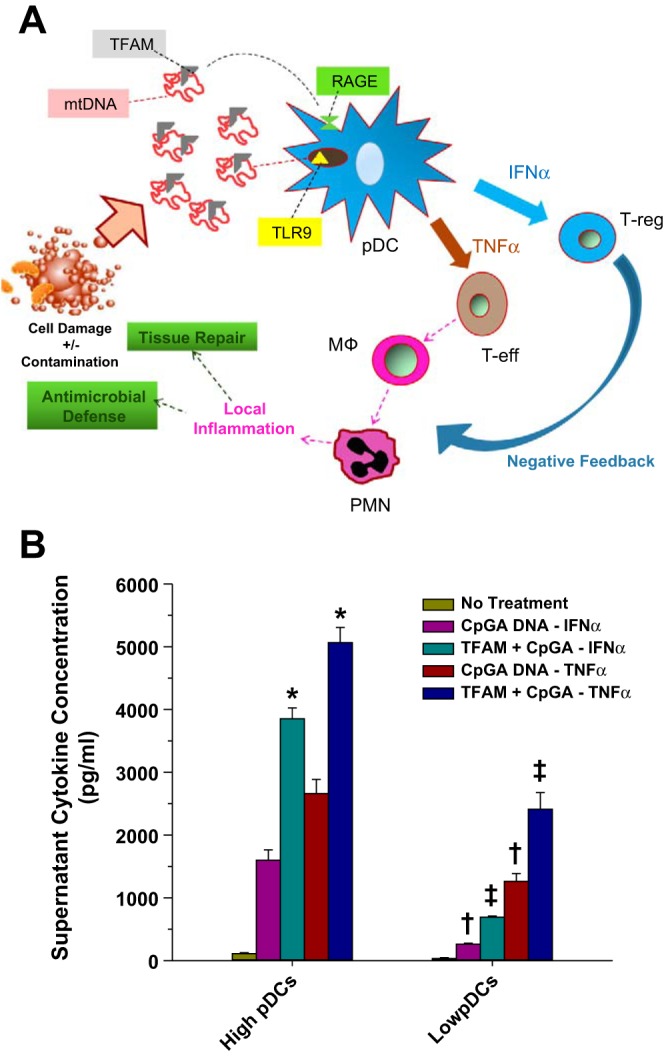Fig. 3.

Plasmacytoid dendritic cells (pDCs) play a central role in orchestrating both pro- and anti-inflammatory responses. A: during acute tissue injury mitochondrial DNA (mtDNA) and mitochondrial transcription factor A (TFAM) released from damaged cells and contaminating bacteria is sensed by pDCs to promote simultaneous release of TNF-α and IFN-α, which promotes the simultaneous activation of proinflammatory and regulatory immune cells. Thus pDCs are poised to orchestrate a localized and self-limited inflammatory response. Presumably, excessive pDCs activation (e.g., massive cell injury) could promote systemic pro- and anti-inflammatory immune responses. B: in splenocyte cultures representing complex immune cell interactions typically occurring in vivo release of IFN-α and TNF-α in response to immunogenic (CpGA) DNA is enhanced by TFAM and depletion of pDCs [by magnetic MicroBead selection (Miltenyi Biotec, Auburn, CA)], representing <3% of the total cell population from the splenocyte cultures, is shown to greatly suppress the immune response. Thus pDCs are important “amplifiers” of the immune response to TFAM and DNA. *P < 0.01, compared with corresponding CpGA DNA treatment alone; †P < 0.01, relative to matching treatment in the High pDC group; and ‡P < 0.01, compared with corresponding CpGA DNA treatment alone and the matching treatment in the high-pDC group. PMN, neutrophil; MΦ, macrophage; T-eff, effector CD4+ T cell; T-reg, regulatory T cell.
